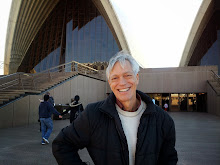18th-c. descriptions of Sinfonie (Germ.), sinfonia (It.), symphony (Eng.), symphonie (Fr.)
Johann Mattheson, Das neu-eröffnete Orchestre (Hamburg, 1713), trans. by Zaslaw, Mozart's Symphonies (Oxford, 1989), 71-72.
Symphony [Sinfonie], Sinfonia ... signifies such compositions as are performed solely on instruments .... The Italians make use of these symphonies before their operas and other dramatic works, as well as before church pieces; before the former instead of overtures, but before the latter instead of [church] sonatas. Symphonies (especially those belonging to secular pieces) commonly begin with a majestic movement, wherein the top part usually dominates (this is divided into two sections in the same meter, each of which may have its own repeats); and after this conclude with a merry, minuet-like movement (likewise admitting of two or more repeated sections), which in church, however, is never found. There is otherwise nothing typical or indisputable to report of symphonies, because each [composer] follows his fancy in the matter.
Mattheson, Der vollkommene Capellmeister (Hamburg, 1739), trans. by Zaslaw, 72.
The sinfonia (symphony)
da chiesa (in the church),
da camera (in the chamber),
del drama (in the opera),
is a more moderate-sized genre [than the concerto grosso]. The symphony, although it also requires a suitable instrumentation of both strings and winds, may nevertheless not be so fanciful and luxuriant as the concerto grosso. Irrespective of the fact that symphonies serve to open the most elegant musical plays and as introductions to the most humble, they have no such voluptuous manner about them. In churches they must be even more moderately contrived than in theatres and halls. Their principal characteristic consists in creating in their brief preface a little sketch of what will follow. And one can easily infer from this that the expression of emotion in such a symphony must be ruled by the same passions that are prominent in the work iself.
Johann Adolf Scheibe, Der critische Musicus (Hamburg, 1738-40), trans. by Zaslaw, 73.
Ever since Italian opera reached its full maturity, we have been familiar with a genre of instrumental pieces that were performed in front of the theatre curtain in order to prepare the audience in a commodious and ingenious manner. These pieces came to be called "symphonies." It was not long before such pieces were introduced here in Germany, and it was here, I might almost say, that they attained fullest perfection ....
Symphonies comprise a three-fold genre: to wit, those used for church pieces, those for theatrical and other [secular] vocal pieces, and finally also those intended as purely instrumental works, without connection to any vocal music .... Thus we have sacred theatrical, and chamber symphonies. All symphonies that are to be used with vocal compositions should be in agreement with the vocal compositions of which they form a part. It then follows that both must be composed in the same style. Symphonies not compsed with this intention have, as a result, a different character.
[Also see Sulzer (1771-74) and Koch (1793) definitions.]
Jean-Jacques Rousseau, "Ouverture," Dictionnaire de musique (Paris, 1768), trans. by Zaslaw, 183.
The Italians ... begin by a striking, lively movement in duple or common time; then they offer sotto voce an andante in which they aim at displaying all the ornaments of beautiful melody; and they conclude with a brilliant allegro, generally in triple time.
The reason they give for this arrangement is that in a large audience, where the spectators make a great deal of noise, it is necessary first to bring them to silence and capture their attention by means of a glittering, striking beginning. The Italians say that the grave section of our ouvertures is neither heard nor listened to by anyone; and that our premier coup d'archet--of which we boast with such great emphasis, even though it is less noisy than, and confounded with, the tuning of instruments that precedes it--is more suitable for preparing the audience for boredom than for alertness. They add that, once the spectator is made attentive by less noise, his interest should be engaged by an agreeable and flattering melody, which disposes him to the tenderness with which he is to be inspired [during the opera]; and lastly, to conclude the overture with a movement of a different character which , contrasting with the beginning of the drama, marks by its loud ending the silence that the actor, on his entrance to the stage, requires of the spectator.
Thursday, August 30, 2007
Subscribe to:
Post Comments (Atom)

No comments:
Post a Comment